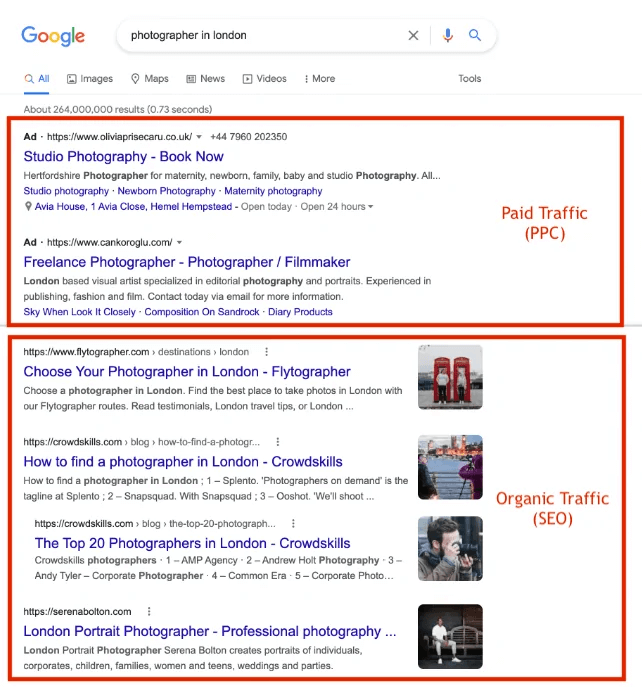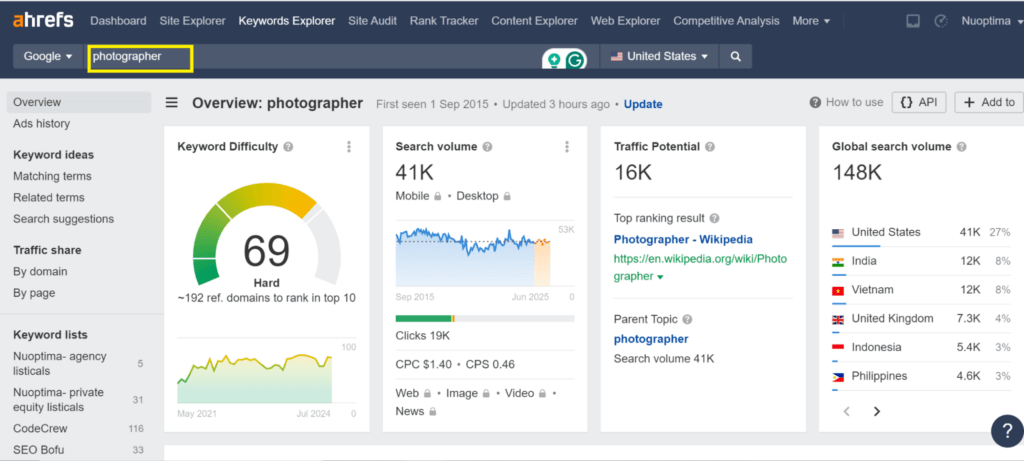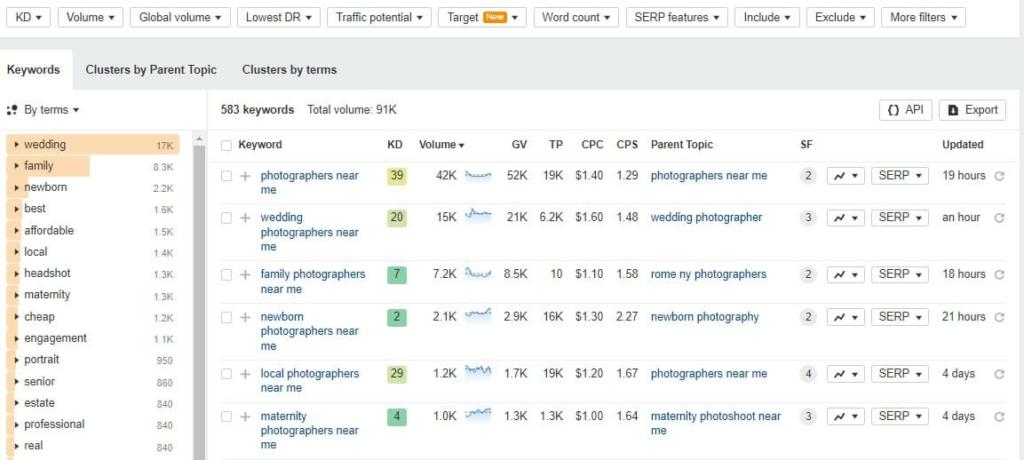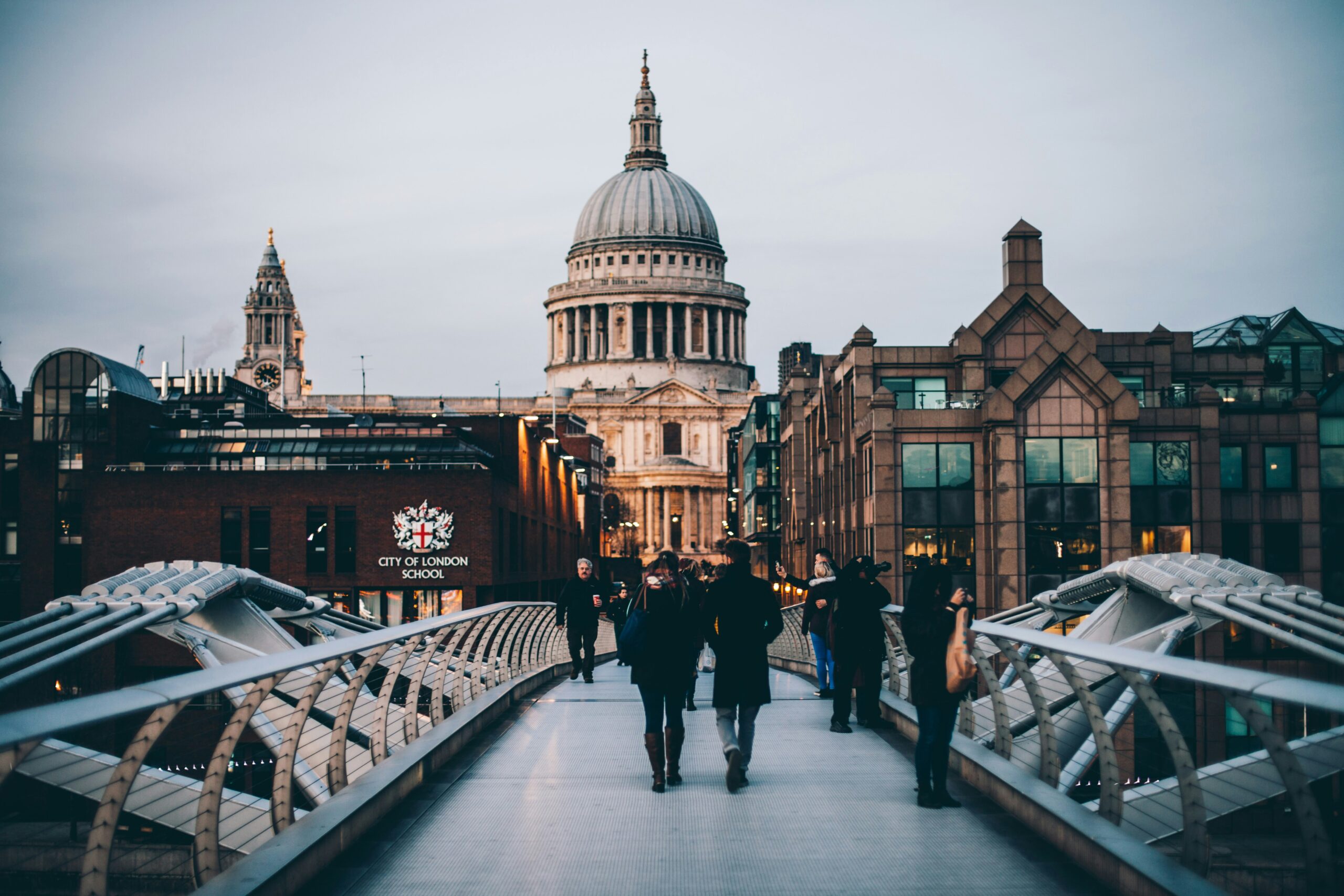As a photographer, your passion lies in crafting beautiful shots, capturing human expression, and honing your skills. But, as a business owner, you must also manage the challenges of building a successful career.
Back in the day, photographers used to find clients through word of mouth; now, people rely on the internet to connect with service providers. Hence, today, photographers often create visually stunning websites that showcase their work and attract potential customers.
But no matter how beautiful your photos and website are, they won’t bring you new customers if people can’t find your website online. This is where SEO for photographers comes in.

However, you must note that besides SEO, there are several other methods to boost your website ranking, like using pay-per-click (PPC) ads and others. Therefore, it comes down to making the best choice to rank your website that is pocket-friendly and pays off in the long run.
SEO vs PPC: Choosing the Best Fit for Your Photography Website

SEO (Search Engine Optimization) and PPC (Pay-Per-Click) are two of the most effective marketing tactics, as they help generate traffic to your site. However, understanding the differences between these two can help you choose the right fit for your company.
| SEO | PPC |
| SEO enables you to generate more organic traffic where prospects can easily find your website using a search engine. | PPC ads offer quick results as they direct traffic to your site as soon as you kickstart your campaign. However, ads can be costly, and traffic ceases when you stop paying for them. |
| SEO helps build credibility, as 45.1% of users are likelier to trust and click on organic search results than 1.8% who click on PPC ads[3]. | PPC helps to get you in front of potential customers quickly, as you can use ads to target specific keywords and get clicks instantly. |
| SEO is more sustainable for long-term growth because your traffic will continue to yield results far into the future. | PPC ads always appear on top of the search results, which could potentially increase your brand visibility. |
| SEO is cost-effective in the long term since you won’t be paying every time a user clicks on your website. | Although costly, PPC allows for budget control. You can choose how much you want to spend daily and set a fixed limit. |
The Importance of SEO for Photography Websites
Are you familiar with the saying, “You’ll never have a second chance to make your first impression?” Well, it turns out that investing in crafting the best SEO roadmap for your photography website or any website is your best shot at a good first impression as a professional photographer.
Of what relevance is a good first impression, anyway? Let’s explain with a little statistics.

The above photo displays Google search data for the keyword ‘photographer.’ The global volume refers to the number of average monthly searches for this term, also known as search volume (SV). Below are the top 10 countries with the highest monthly search volume for the keyword “photographer.”
| Countries | Search Volume (SV) |
| United States | 41K |
| India | 12K |
| Vietnam | 12K |
| United Kingdom | 7.3K |
| Indonesia | 5.4K |
| Philippines | 4.6K |
| Canada | 3.6K |
| Malaysia | 3.6K |
| Australia | 3.1K |
| Taiwan | 2.7K |
According to a study by Moz[1], the first page of Google gets 71% of the clicks, while the second page gets only 6%. That means that if your website is not on the first page of Google for your target keywords, you are losing 94% of the potential traffic. SEO helps you rank higher for the keywords your ideal clients are searching for, thus putting your site right in front of them at the right time and matching their search intent.
That’s not all. SEO is also crucial for building trust and credibility with your audience, as 87% of your prospects will read online reviews before making a purchase decision, and 48% of them only pay attention to reviews written in the past two weeks[2]. That means that if your website has positive reviews, testimonials, and social proof, you are more likely to attract and convert your visitors.
10 Easy Steps to Boost Your Rankings in 2025
SEO for photographers is not a one-size-fits-all approach. Depending on your niche and specialty, you may have different goals, challenges, and opportunities for SEO.
For example, optimizing your website with SEO for wedding photographers might be your best bet if you are a wedding photographer. You may want to target keywords specific to your location, such as “wedding photographer in New York” or “best wedding photographer in Los Angeles.” Highlighting your services in tandem with popular event features, like “live wedding music in Sydney,” can also attract clients looking for comprehensive packages.
On the other hand, a portrait photographer wants to aim for keywords related to their niche, such as “family portrait photographer” or “corporate portrait photographer.” You can optimize these as well, specifically to your location, by using keywords like “family portrait photographer in New York” or “corporate portrait photographer in Los Angeles.”
Whatever the niche, style, or skill of photography you may fall into, the following SEO tips for photographers are what you need to turn the tables in your favor. Let’s explore ten easy steps to boost your website ranking in 2025.
1. Use Relevant Keywords
One of the most important steps of SEO is identifying appropriate keywords to target. More specifically, discover what your target audience is interested in and what they are actively searching for. When you have this information, you can tailor your website to these keywords so it appears near the top of the search results, directly in front of potential clients.
The right SEO keywords for photographers can be the difference between being discovered or overlooked. So, choosing words that reflect your specialty and your services is essential.
Finding the right keywords involves understanding what your target audience is searching for and how they search for it. You gain valuable insights into their needs and preferences by researching and discovering what topics and queries your audience is actively searching. You can use tools like Ahrefs or Semrush to look for the most relevant keywords for your target audience.
Your knowledge of SEO for photographers will enable you to analyze the data to assess the search demand for different keywords and create pages that show up on Google to help you collect organic traffic. For example, when someone is looking for a photographer service, these are some of the search queries:
- ‘Photographer near me.’
- ‘Photographer in…’ + location. For example, a Photographer in South London.
- Event-based photographers. For example, wedding photographers.
- Photographers for specific people. For example, family photographers.
- Questions about photography services.
Remember, the goal is to make it easy for those seeking your services to find you. If you tailor your SEO tactics to showcase what you are good at, your website will stand out more online.
The image below shows the average monthly search volume for some keywords related to photographers and photography services.

All these searches indicate that these people are looking to hire a local photographer within a specific niche. As you can see, there is an average of 42 thousand searches just for ‘photographers near me’ each month. So, if your website ranks for such keywords, your website can potentially reach millions of people — all reinforcing the value that keyword research services bring to the table.

You can also carry out competitor analysis using SEO tools to identify relevant keywords that your target audience is searching for on Google. If you use a tool like Ahref, a competitor analysis will reveal the keywords that your competitors rank for; you’ll also discover keyword gaps that you can explore to outperform them.
2. Craft Effective SEO Strategies
Once you have the right SEO keywords for photographers, you need to craft effective SEO strategies for your photography website, which includes all your plans and actions to optimize your website for your target keywords and audience.
There are three main types of SEO strategies that you need to consider for your photography website. And they all affect how well your site ranks, how much traffic it gets, and how many conversions you get.
| SEO Strategies | Description |
| On-page SEO | Focuses on making your website’s content, structure, and design better for the target keywords and people you want to reach. This includes optimizing meta tags and creating high-quality, optimized content for your web pages. |
| Off-page SEO | Involves activities outside your website that impact your rankings. It’s all about building links and relationships with other sites to boost your website’s reputation and popularity. |
| Technical SEO | This concerns improving your website’s performance, security, and compatibility with search engines and users. |
3. Optimize Your Website
One of the first steps to optimize your website for SEO is to improve your website structure and URLs. These affect how your site is organized, navigated, and indexed by search engines and users. Here is a checklist of things to do:
Have Clear, Logical, and Consistent Structure
With over 5 billion internet users worldwide [5], a well-organized website is more than a convenience — it’s necessary. A website should be structured to mirror its content hierarchy, like organizing pages in a logical flow that reflects the importance and relationship between the content.
Having a website that’s easy to understand and navigate is even more critical now because search engines are getting smarter with AI and machine learning. A well-organized website is more likely to be favored by search engines.
For example, a photography website might have a main category for ‘Services’ with subcategories for ‘Wedding Photography,’ ‘Portrait Photography,’ and ‘Event Photography.’ Each subcategory would then contain individual pages with specific content related to those services.
Contain Reflective, Short, But Descriptive URLs
The URLs of your website should clearly indicate the content of the page they lead to, as they help users understand where they are on your site and aid search engines in understanding the page’s content.
For instance, a URL like www.photographywebsite.com/services/wedding-photography is descriptive and immediately tells both users and search engines what to expect on the page. Unlike a URL like www.photographywebsite.com/services/services/services123, which is repetitive and does not clearly indicate the content of the web page.
URLs should be concise and give a clear idea of the page content without being overly long or complex. Shorter URLs are easier to read, share, and remember. They reduce the risk of errors when typing or copying the URL. A URL like www.photographywebsite.com/wedding-tips is short, to the point, and user-friendly, while a URL like www.photographywebsite.com/services/wedding-photography/how-to-take-the-best-wedding-photos-with-the-best-camera-settings-and-lighting-tips-for-beginners is too long and complex making it difficult to share.
Include Relevant Keywords
Adding target keywords to your URLs can be beneficial for SEO. Keywords signal to search engines the topics your pages cover and can contribute to the page’s relevance in search results. However, it’s essential to use them naturally and avoid keyword stuffing.
A URL like www.photographywebsite.com/wedding-photographer-nyc is keyword-rich yet still readable and relevant.
Showcase Good User Experience (UX)
94% of all first impressions come from how a website looks (design)[4]. Your website’s navigation should allow users to find information quickly and easily. So, have a clear menu structure, use breadcrumbs, and ensure each page is accessible within a few clicks from the homepage.
A good rule of thumb in SEO for photographers is the ‘three-click rule,’ which suggests that users should be able to find any information on your website within three clicks from the homepage.
A website that’s easy to use keeps users engaged and reduces bounce rates, which is crucial since 40% of users will leave a website that takes more than three seconds to load[5].
4. Image Optimization
As a photographer, you know how important images are for your website. Images are the leading way to showcase your work, style, and personality and to attract and engage your visitors.
Smaller file sizes make your website load faster, which is essential because visitors might leave if a page takes too long to load. Faster websites also rank better in search engine results, which helps more people find your work.
For the best SEO for photographers, here are some simple tips for image optimization:
- Use high-quality and relevant images with the proper format that matches your content and target keywords. JPEG is suitable for photographs, while PNG is better for images with text or transparent backgrounds.
- Compress and resize your images to reduce their file size, improving your website’s speed.
- Use descriptive and keyword-rich file names for your images, such as “wedding-photographer-in-new-york.jpg” instead of “DSC0001.jpg.”
- Use alt texts for your images, which are the text descriptions that appear when your images cannot be displayed or accessed. For example, instead of “IMG_1234.jpg,” you might use “London Bridge skyline at sunset.”
- If your site uses JavaScript galleries or image pop-ups, search engines might be unable to crawl your images. So, provide an image sitemap to help search engines discover images they might not otherwise find.
5. Mobile Optimization
How well your website adapts and performs on devices like smartphones, tablets, and laptops can positively or negatively impact your SEO ranking. Data from Statistica shows that handheld devices (excluding tablets) accounted for approximately 58.67% of global website traffic in the last quarter of 2023[6].
Similar data from Statista [7] reports that as of January 2024, more than 60.67% of all internet traffic comes from portable gadgets. This trend is not just a passing phase; it’s the new standard for online engagement..
![Graph Data from Statista showing the percentage of mobile device website traffic globally between 2015-2023 (excluding desktop and tablet devices), emphasizing the importance of mobile devices for SEO for photographers[8].](https://nuoptima.com/wp-content/uploads/2024/07/Graph-Data-from-Statista-.png)
Google uses mobile-friendliness as a ranking factor and, therefore, prefers to index and rank the mobile version of your website over the desktop version. So, if your website is not adaptive to various screen sizes, you may lose ranking, traffic, and conversions from portable phone users.
Here are some best practices for optimizing your site for smartphones:
| Best Practices | Description |
| Compress Images | Large images can slow down your site, especially on cell phones. Use tools to compress your photos without losing quality. |
| Adaptive Images | Serve different image sizes for various devices to ensure fast loading times and proper display on screens of all sizes. |
| Touch-Friendly Navigation | Make sure buttons and links are easy to tap on a small screen. |
| Simplify Design | A cluttered website can be challenging to navigate on a portable device. Keep your design clean and straightforward. |
| Fast Loading Times | Phone users expect quick loading times. Optimize your site’s speed by minimizing code, reducing redirects, and leveraging browser caching. |
| Use Mobile-Friendly Plugins | If you use a content management system, choose plugins optimized for handheld devices. |
6. Local SEO
Local SEO services are crucial for photographers and other service providers who offer in-person services. These services help ensure that your website appears in search results when people in your local area are looking for your type of service. For instance, when someone searches for a ‘photographer near me,’ it will show results narrowed down to their location.
Adding your site to Google Business Profile is a start, but it won’t bring in substantial traffic. Only expert, comprehensive optimization can dramatically increase your organic traffic and search engine rankings.
Let’s see some proven ways to optimize your website for local SEO, amongst others:
| Proven Ways | Description |
| Optimize Your Google Business Profile | Your Google Business Profile is often the first thing a potential client sees, so make sure it’s complete with up-to-date information, high-quality images, and engaging descriptions. |
| Local Keywords | Use keywords that reflect your local area. For example, if you’re a wildlife photographer in Lagos, Nigeria, “Lagos wildlife photographer” should be a key phrase on your site. |
| Focus on Reviews | Encourage your satisfied clients to leave positive reviews, as they can improve your local search rankings and persuade potential clients to choose you over competitors. |
7. Create SEO-Friendly Content
Images are not the only type of content that you need to rank your photography website. You should also create SEO-friendly text-based content, such as titles, descriptions, headings, paragraphs, lists, and more.
These help search engines and users understand your website and web pages’ purpose, topic, and value. You can showcase your personality, voice, and style as a photographer and differentiate yourself from the competition. It also allows you to tell your story, share your passion, and connect more deeply with your audience.
Here are some of the best practices to follow when creating SEO-friendly content
- Include your main keyword in the title of the article.
- Use keywords in headings (H1, H2, H3) to structure the content and improve readability.
- Mention your main keyword within the first 100 words of the content.
- Include your keyword in the conclusion to reinforce the topic.
- If possible, include the main keyword in the URL of the page.
- Use the main keyword in the meta description to improve click-through rates from search engines.
8. Build Backlinks
Backlinks are the links that point to your website from other websites and online platforms. They are one of the most critical factors for SEO, as they indicate your website’s popularity, authority, and trustworthiness.
However, not all backlinks are created equal. You need to focus on getting backlinks from websites with high Domain Authority (DA) and Domain Rating (DR). This is because external links from these websites signal to search engines that your content is trustworthy and valuable, further boosting your site’s overall SEO performance.
It’s important to note that there are two different types of backlinks: do-follow and no-follow backlinks. Do-follow backlinks allow search engines to follow a link from an external website and pass on “link juice” or SEO value to your website and improve your search engine ranking. No-follow backlinks, on the other hand, instruct search engines not to pass on SEO value from the external website. Do-follow backlinks are generally better for SEO; however, no-follow backlinks can still be valuable in driving traffic and enhancing your site’s visibility.
Here’s how you can build good backlinks:
Get Featured in Online Galleries: If your work is showcased in online photography galleries, it can result in backlinks from those platforms.
Engage with Photography Communities: Participate in online photography forums or groups, as your active involvement can lead to natural backlinks from these communities.
Collaborate with Photography Blogs: Offer to write guest posts for popular photography blogs. In return, you’ll likely get a backlink to your website – this is more organic.
Create Shareable Content: Develop photography guides, tips, or compelling blog posts that others will want to link to. This type of “link-worthy” content can attract backlinks organically.
Leverage Broken Link Building: Identify broken links on photography-related websites and suggest your content as a replacement. It’s a win-win: you fix their site and gain a backlink.

Social media is a great way to make your website more SEO-friendly. You can use it to boost your image as a photographer and to reach more people who might need your services. Social media can make a big difference for your photography SEO.
Social media can also create more engagement with your website and content, such as likes, shares, comments, and mentions. These show how popular, reliable, and trustworthy you are to search engines and users. Additionally, it leads to more visitors, recommendations, and contacts for your website and content and helps you turn them into customers.
These are some social media platforms that photographers can leverage for different purposes.
| Platform | Best For | Why it’s Suitable |
| Exposure | With its vast user base, Instagram is ideal for photographers to showcase their work and build a brand. | |
| Flickr | Collaboration | Flickr provides a platform for photographers to collaborate and engage with a community that appreciates photography. |
| 500px | Feedback | 500px is a platform where photographers can receive feedback and critiques from other professionals. |
| Behance | Adobe Integration | Behance is integrated with Adobe services, which is perfect for displaying professional portfolios. |
| Inspiration | Pinterest allows photographers to share ideas and draw inspiration from various visual content. |
10. Hire an Expert SEO Agency to Maximize Your Visibility
SEO is a rewarding investment for photographers. Still, it also requires expertise, hard work, and time to implement. Creative industries are full of service providers trying to make their mark and promote their work. The sheer volume of businesses on the internet makes it challenging for photographers to show up on the first page of search results and get noticed.
NUOPTIMA has been working with brands for years. Our expert team has extensive SEO experience for various industries, so we know exactly how to get your website on the first page of Google. If you’re wondering how to choose an SEO company, it’s crucial to consider one that offers comprehensive services like these:
- Arrange links to be placed on reputable creative and photography websites.
- Curate SEO-optimized content to help your website rank for more keywords.
- Evaluate and optimize existing pages to comply with Google’s regulations and best practices.
- Create all the necessary pages to improve and increase the organic traffic your website collects.
We’ve helped websites from various industries increase their search engine visibility. For example, we helped Naturecan achieve the top position on Google’s search results page for one of their high-converting keywords in less than 6 months. We also helped Marketplace in increasing their conversions by 3.4 times in just 121 days. You can view more case studies here.
Here at NUOPTIMA, we pride ourselves on being an SEO agency with a team that is well-versed in helping websites achieve the best results. Book a free discovery call with our team to explore how SEO can achieve fantastic results for your photography website and business.
The Future of SEO for Photographers
Nowadays, photographers need more than just a portfolio to showcase their work. They need a robust online presence that can help them reach potential clients. SEO for photographers is a powerful tool that can significantly enhance your online visibility, attract potential clients, and establish your brand as a leader in the photography industry.
FAQ
Most photographers start seeing meaningful SEO gains within 3–6 months. Local competition, domain authority, and content quality all affect speed. Sites with strong foundations may see faster results, while newer websites may need a longer ramp-up.
Absolutely. Blogging about photography tips, recent shoots, location guides, or client stories can drive long-tail keyword traffic and show potential clients your expertise. For example, a post titled “Top Cape Town Photoshoot Locations” can attract local searchers and build trust.
Yes. Images should be compressed for fast loading and include descriptive file names and alt text. This helps with image search visibility (Google Images) and improves page load speed, which is a ranking factor. For example, use “family-photo-session-garden-route.jpg” instead of “IMG1234.jpg”.
- Claim and optimize your Google Business Profile
- Collect client reviews
- Add location-specific keywords to your website (e.g., “Cape Town newborn photographer”)
- Embed a map on your contact page
- Get listed in local directories and photography platforms
References
- https://moz.com/blog/google-organic-click-through-rates-in-2014[1]
- https://www.powerreviews.com/research/power-of-reviews-2023/[2]
- https://www.forbes.com/advisor/business/software/seo-statistics/[3]
- https://review42.com/resources/web-design-statistics/[4]
- https://www.forbes.com/advisor/business/software/website-statistics/[5]
- https://www.statista.com/statistics/277125/share-of-website-traffic-coming-from-mobile-devices/[6]
- https://www.statista.com/statistics/306528/share-of-mobile-internet-traffic-in-global-regions/[7]
- https://www.statista.com/statistics/277125/share-of-website-traffic-coming-from-mobile-devices[8]



